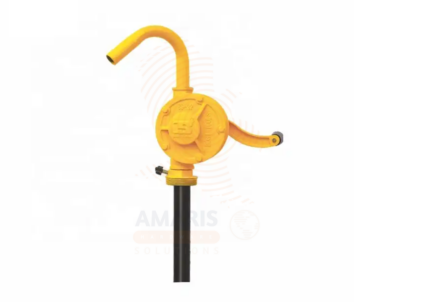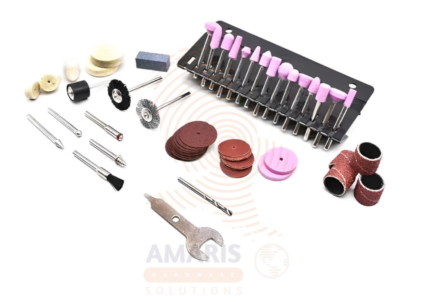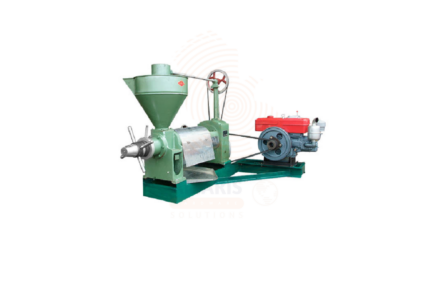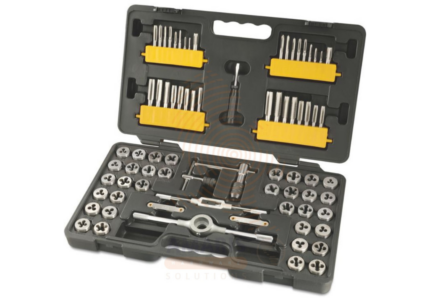Stone Separator
WhatsApp Order
A stone separator is an agricultural or industrial machine designed to remove stones and other unwanted materials from grains, seeds, soil, or construction aggregates. Using vibration, airflow, or gravity-based separation methods, it ensures cleaner, higher-quality end products. Stone separators are commonly used in farming, food processing, milling, and construction to improve operational efficiency and prevent equipment damage from hard debris.
Description
Uses
- Grain Cleaning
o Removes stones and heavy impurities from harvested grains like wheat, rice, and maize.
o Enhances grain quality before milling or packaging. - Seed Processing
o Separates unwanted stones and debris from seed batches to ensure purity.
o Protects seed drills and planters from mechanical damage. - Soil and Compost Refining
o Removes rocks from soil or compost used in agriculture and landscaping.
o Ensures smoother tilling and planting. - Construction Aggregate Sorting
o Eliminates unwanted debris from sand, gravel, or crushed materials before use in construction.
o Enhances material uniformity and structural integrity. - Milling and Flour Production
o Ensures stone-free grains enter milling systems to prevent contamination or machine damage.
o Increases safety and cleanliness in food-grade operations. - Animal Feed Preparation
o Prepares cleaner feedstock by removing dense contaminants.
o Prevents harm to livestock and feed processing equipment. - Mining and Quarrying Support
o Assists in pre-sorting raw material by eliminating non-valuable stones.
o Improves downstream processing efficiency. - Waste Sorting and Recycling
o Separates heavy particles or rubble from recyclables in waste management systems.
o Reduces equipment wear and increases material recovery. - Gardening and Landscaping
o Refines soil or planting media by filtering out pebbles and rocks.
o Prepares surfaces for turfing or planting.
SAFETY HANDLING PRECAUTIONS
- Wear Dust and Eye Protection
o Use safety goggles and dust masks when operating in dry, dusty environments. - Keep Hands Away from Moving Parts
o Avoid injuries by keeping clear of vibrating or rotating mechanisms. - Secure and Level the Machine
o Operate on flat, stable surfaces to prevent tipping or vibrations. - Regular Maintenance and Cleaning
o Clean sieves and components to ensure consistent performance and avoid clogging. - Use in Well-Ventilated Areas
o Prevent buildup of dust and ensure proper airflow for machines using air separation. - Shut Down Before Servicing
o Always turn off the machine before cleaning, adjusting, or inspecting. - Proper Operator Training
o Ensure users understand the controls and purpose of the machine. - Avoid Overloading
o Feed material in controlled amounts to prevent blockages and uneven separation.
Electrical Safety
o For electric-powered models, check wiring and grounding before use.
Related products
Bi-Metal Hole Saw Set
A 9 PCS Bi-Metal Hole Saw Set refers to a collection of nine hole saws, each constructed with a bi-metal design. A hole saw is a cylindrical cutting tool used to create holes in various materials such as wood, metal, plastic, and more. The term "bi-metal" indicates that the hole saws are made from two different types of metals, typically high-speed steel (HSS) and a more durable alloy like cobalt. This combination enhances the hole saw's cutting performance, making it suitable for a wide range of applications and providing increased durability and longevity. The set typically includes hole saws of different sizes to accommodate various hole diameters, making it a versatile tool for professionals and DIY enthusiasts alike.
Die Set
An "8 PCS DIE SET" typically refers to an 8-piece die set used in various manufacturing and machining processes. In manufacturing and metalworking, dies are specialized tools used to shape, cut, or form materials such as metal, plastic, or other substances. A die set, in this context, is a collection of individual dies designed to work together for specific tasks.
German Type Grease Gun
PRODUCT DESCRIPTION
A "German type grease gun" typically refers to a type of grease gun that is of German origin or follows a design influenced by German engineering. A grease gun is a handheld tool used in automotive and industrial settings to apply lubricating grease to machinery or equipment. The term "German type" may indicate that the grease gun follows design principles, specifications, or standards commonly associated with German engineering. German engineering is often associated with precision, durability, and high-quality manufacturing. Therefore, a German type grease gun may be expected to exhibit these characteristics. It's worth noting that specific details about a "German type grease gun" may vary, and the term may be used loosely to refer to any grease gun with characteristics reminiscent of German design principles.
Hand Rotary Barrel Pump
A hand rotary barrel pump is a manually operated pump designed to transfer liquids, typically from barrels or containers, through a rotary pumping mechanism. The pump is equipped with a hand crank or lever that, when turned, activates a rotary gear or vane system inside the pump. This rotary action creates suction, allowing the pump to draw liquid from the source container and then dispense it through a spout or nozzle. Hand rotary barrel pumps are commonly used for transferring various fluids such as oils, fuels, chemicals, and other non-corrosive liquids. They offer a portable and efficient solution for applications where a power source may be unavailable or impractical.
Mini Die Polisher Kit
A MINI DIE POLISHER KIT," it could potentially be a set of 80 pieces of miniature tools and accessories designed for polishing or finishing small objects, such as jewelry, metalwork, or other intricate items.
In such a kit, you might expect to find a variety of mini die polishers, polishing compounds, abrasive tools, and other accessories that cater to detailed and precise polishing tasks. The specific contents could include items like mini polishing wheels, buffs, abrasive discs, polishing compounds, and various attachments suitable for use in a smaller-scale polishing environment.
Oil Expeller
An Oil Expeller is a mechanical device used to extract oil from oil-bearing seeds and nuts through a process of high-pressure mechanical pressing. It typically consists of a screw shaft, pressing chamber, and power system (manual, electric, or engine-driven), and is widely used in small-scale farms, local oil mills, and commercial processing units. Capable of handling materials like sunflower seeds, groundnuts, soybeans, mustard, coconut, and sesame, oil expellers are available in both cold press and hot press variants. This machine enables efficient, chemical-free oil extraction, producing unrefined oil and residual seed cake for further use.
Stone Crusher
A stone crusher is a heavy-duty machine designed to reduce large rocks into smaller stones, gravel, or rock dust for use in construction, road building, and other aggregate applications. These machines use mechanical force to break down stone material, typically through compression or impact. Stone crushers come in various types such as jaw crushers, cone crushers, impact crushers, and hammer crushers, each suited to specific crushing requirements. They are widely used in mining, quarrying, construction, and recycling industries to produce consistent aggregate sizes for foundations, concrete, asphalt, and more.
Tap and Die Set
A tap and die set is a collection of tools designed for threading and cutting threads on screws, bolts, and other fasteners. The set typically includes various sizes of taps and dies, which are used for creating or repairing threads on metal surfaces. Taps are used to cut internal threads, while dies are used for cutting external threads.
A 32-piece set implies that it contains 32 individual tools, which may include both taps and dies in different sizes. The sizes can vary to accommodate a range of thread specifications commonly found in mechanical and automotive applications. These sets are useful for machinists, mechanics, or anyone involved in metalworking who needs to create or repair threads in various sizes and diameters. The set may also come with a case for organization and storage, making it a convenient and versatile tool kit for threading tasks.


 Acrylic Sealants
Acrylic Sealants Construction Adhesives
Construction Adhesives Double-Sided Tape
Double-Sided Tape Duct Tape
Duct Tape Electrical Tape
Electrical Tape Epoxy & Resins
Epoxy & Resins Masking Tape
Masking Tape
 Automotive Wrenches & Socket Sets
Automotive Wrenches & Socket Sets Battery Chargers & Jump Starters
Battery Chargers & Jump Starters Car Jacks & Stands
Car Jacks & Stands Car Wash & Detailing Products
Car Wash & Detailing Products Diagnostic Tools
Diagnostic Tools Tire Inflators
Tire Inflators Vehicle Lighting
Vehicle Lighting Oil & Lubricants
Oil & Lubricants
 Adhesives & Sealants
Adhesives & Sealants Bricks & Blocks
Bricks & Blocks Cement & Concrete
Cement & Concrete Drywall & Plaster
Drywall & Plaster Flooring (Tiles, Wood, Laminate)
Flooring (Tiles, Wood, Laminate) Lumber & Plywood
Lumber & Plywood Paints, Primers & Coatings
Paints, Primers & Coatings Insulation Materials
Insulation Materials Roofing Materials
Roofing Materials
 Circuit Breakers
Circuit Breakers Electrical Cables & Wires
Electrical Cables & Wires Switches & Sockets
Switches & Sockets Fuses & Relays
Fuses & Relays Connectors & Terminals
Connectors & Terminals Electrical Boxes & Panels
Electrical Boxes & Panels Conduit & Fittings
Conduit & Fittings Lighting Fixtures & Bulbs
Lighting Fixtures & Bulbs Extension Cords & Power Strips
Extension Cords & Power Strips
 Anchors
Anchors Bolts
Bolts Clips & Clamps
Clips & Clamps Screws
Screws Nuts
Nuts Washers
Washers Rivets
Rivets Nails
Nails Threaded Rods
Threaded Rods
 Hammers
Hammers Measuring Tools (Tapes, Levels, Calipers)
Measuring Tools (Tapes, Levels, Calipers) Screwdrivers
Screwdrivers Pliers & Cutters
Pliers & Cutters Saws & Blades
Saws & Blades Chisels & Punches
Chisels & Punches Allen Keys & Hex Keys
Allen Keys & Hex Keys Ratchets & Socket Sets
Ratchets & Socket Sets Wrenches & Spanners
Wrenches & Spanners
 Power Tool Accessories (Blades, Bits, Discs)
Power Tool Accessories (Blades, Bits, Discs) Rotary Tools
Rotary Tools Saws (Circular, Jigsaw, Reciprocating)
Saws (Circular, Jigsaw, Reciprocating) Drills & Drivers
Drills & Drivers Grinders & Sanders
Grinders & Sanders Heat Guns
Heat Guns Nail Guns
Nail Guns Impact Wrenches
Impact Wrenches Batteries & Chargers
Batteries & Chargers
 Pipes & Fittings (PVC, Copper, PEX)
Pipes & Fittings (PVC, Copper, PEX) Plumbing Tools
Plumbing Tools Pumps & Motors
Pumps & Motors Sealants & Adhesives for Plumbing
Sealants & Adhesives for Plumbing Valves & Taps
Valves & Taps Water Heaters
Water Heaters Drainage Systems
Drainage Systems Faucets & Fixtures
Faucets & Fixtures Hoses & Tubing
Hoses & Tubing
 Hinges & Latches
Hinges & Latches Hooks & Brackets
Hooks & Brackets Window Hardware
Window Hardware Chains & Cables
Chains & Cables Casters & Wheels
Casters & Wheels Shelving & Storage Systems
Shelving & Storage Systems Door Handles & Locks
Door Handles & Locks Drawer Slides & Cabinet Hardware
Drawer Slides & Cabinet Hardware
 Personal Protective Equipment (PPE)
Personal Protective Equipment (PPE) Respirators & Masks
Respirators & Masks Safety Glasses
Safety Glasses Safes
Safes Security Cameras
Security Cameras Gloves
Gloves Helmets
Helmets Ear Protection
Ear Protection Fire Safety Equipment
Fire Safety Equipment Locks & Padlocks
Locks & Padlocks Motion Sensors & Alarms
Motion Sensors & Alarms
 Garden Fencing
Garden Fencing Garden Furniture Hardware
Garden Furniture Hardware Lawn Mowers
Lawn Mowers Trimmers & Edgers
Trimmers & Edgers Shovels & Spades
Shovels & Spades Rakes & Hoes
Rakes & Hoes Pruning Shears & Loppers
Pruning Shears & Loppers Watering Systems (Hoses, Sprinklers, Nozzles)
Watering Systems (Hoses, Sprinklers, Nozzles)
 Interior Paints
Interior Paints Paint Brushes & Rollers
Paint Brushes & Rollers Paint Strippers & Thinners
Paint Strippers & Thinners Paint Trays & Accessories
Paint Trays & Accessories Exterior Paints
Exterior Paints Spray Paints
Spray Paints Primers & Undercoats
Primers & Undercoats Varnishes & Stains
Varnishes & Stains
 Gaskets & Seals
Gaskets & Seals Hydraulic Fittings
Hydraulic Fittings Industrial Fasteners
Industrial Fasteners Industrial Hoses
Industrial Hoses Lubricants & Greases
Lubricants & Greases Metal Sheets & Bars
Metal Sheets & Bars Bearings & Bushings
Bearings & Bushings Belts & Pulleys
Belts & Pulleys
 HVAC Filters
HVAC Filters Insulation for HVAC
Insulation for HVAC Air Conditioners
Air Conditioners Refrigerants
Refrigerants Ventilation Ducts & Fittings
Ventilation Ducts & Fittings Thermostats & Controllers
Thermostats & Controllers Fans & Blowers
Fans & Blowers
 Pegboards & Hooks
Pegboards & Hooks Shelving Units
Shelving Units Storage Bins & Containers
Storage Bins & Containers Toolboxes & Tool Chests
Toolboxes & Tool Chests Workbenches
Workbenches Drawer Organizers
Drawer Organizers Labeling Supplies
Labeling Supplies
 Welding Accessories (Clamps, Brushes)
Welding Accessories (Clamps, Brushes) Welding Electrodes & Rods
Welding Electrodes & Rods Welding Helmets & Gloves
Welding Helmets & Gloves Welding Machines
Welding Machines Soldering Irons & Stations
Soldering Irons & Stations Flux & Solder Wire
Flux & Solder Wire
 Generator Accessories
Generator Accessories Inverters
Inverters Portable Generators
Portable Generators Power Inverters
Power Inverters Transfer Switches
Transfer Switches Diesel & Gasoline Generators
Diesel & Gasoline Generators
 Transport Equipment: Carts, Dollies, and Hand Trucks
Transport Equipment: Carts, Dollies, and Hand Trucks Storage Solutions: Pallets, Racks, and Containers
Storage Solutions: Pallets, Racks, and Containers Lifting Equipment: Hoists, Cranes, and Jacks
Lifting Equipment: Hoists, Cranes, and Jacks Conveyors and Accessories: Belts and Rollers
Conveyors and Accessories: Belts and Rollers








